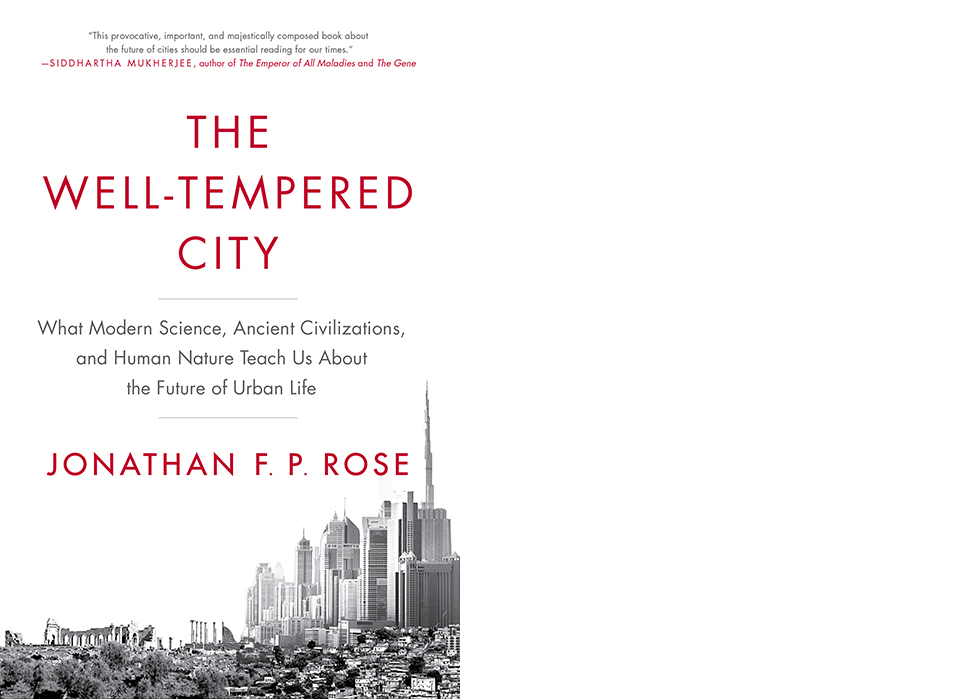by: ac
On 11.09.16, Jonathan F.P. Rose presented his new book, The Well-Tempered City: What Modern Science, Ancient Civilizations, and Human Nature Teach Us About the Future of Urban Life, at the Center for Architecture. This is an epic tale; a kind of broad-reaching text akin to Howard Zinn’s A People’s History of the United States for cities.
Rose takes us through the ancient civilizations of Memphis, Mesopotamia, and more in order to define the waxing and waning of urban fabric. This is a deep history into the evolution and mechanics of the urban condition and its future. The structure of Rose’s book is based on Bach’s The Well-Tempered Clavier, which functions as his roadmap for distinguishing the “perfection of the whole to the role of the individual”; the composition is Rose’s conceptual muse in defining a healthy and dynamic urban organism.
In the preliminary chapters, Rose illustrates how the intellectual interests of his youth led him to this journey of defining and refining urbanism to create an overarching history of the field. He describes himself as a child of the suburbs, who arrived at Yale at a pinnacle time in American history, the 1970s. Cities, New Haven in particular, were in decline and he was focused on the study of “the functioning of human systems.” His studies brought him to G. Evelyn Hutchinson’s classroom, whose thinking, biodiversity dovetailing into environmentalism, helped Rose craft an understanding of cities as complex and adaptive systems. This, along with travels to Asia and Latin America, set Rose to study great civilizations for precedents of contemporary urban problems.
The book is filled with provocative ideas and pragmatic resolutions. Horst Rittel and Melvin Webber’s “wicked problem” from their book Dilemmas in a General Theory of Planning, where every urban issue is a symptom of another problem, remains with the reader throughout. This definition makes one interrogate each urban issue to unravel a crisis. Another critical point is Rose’s contention that the root of the Syrian conflict is an environmental crisis – a five-year drought illuminating a corrupt water allocation system brought a flight into cities and desperation ensued. With these two “truths” on the table, the text is a disarmingly convincing argument for environmental activism.
At mid-point in this dense text, Rose discusses Michael Bloomberg’s first acts as mayor of New York City in 2002. The initiation of the Department of Data Analysis brought the city some of its clearest and simplest solutions. Bloomberg’s deputy on this project, Mike Flowers, developed one building identification system for all city agencies. This led to a dramatic decrease in unsafe building conditions. Rose believes systems of big data and crowd sourcing hold the key to more complex city and infrastructure issues, citing more specific tech advances such as Streetbump.com and Waze as examples.
Although the book is filled with deep conjectures as to the root of problems, as well as possible solutions, there is no new information; this blueprint is filled will well-treaded territory. The revolution and hope in this book is the fact that a mind like Rose’s exists. He briefly describes his nighttime musings and writing sessions, giving us a romantic picture of a person who values ideas and their evolution through sweeping paths of history. This makes him a cherished character – a developer that operates as a public intellectual, necessary and crucial to our future.









